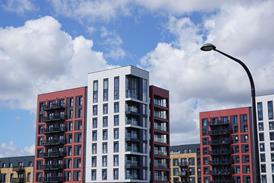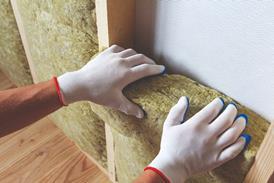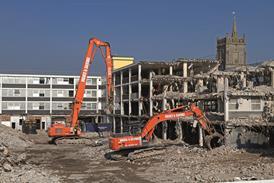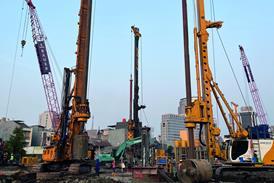In the UK, audio and video door entry sales are estimated to be less than 10 per cent of sales across Europe. Whereas in France, Italy and Spain, door entry systems can be seen on practically every house as well as commercial uses. The different style of living in the UK accounts for much of the deficit. However, it is also probably true that lack of understanding and knowledge of the products and their benefits to both the installer and end user play a big part in its slow growth. It is unusual for door entry systems to be installed as a stand-alone system; it is more commonly an add-on to access control or intruder installations. The most frequent types of applications for door entry systems in the UK include office refurbishment's, partitioned houses, flats, large or stately homes with gates, warehouses, for use with gates and barriers, hospitals, leisure centres, schools and universities.
Electronic door entry systems first appeared in the 1940's. Initially a luxury afforded only by the affluent few; these audio systems quickly caught on, were produced by several manufacturers and became more affordable. As technology has developed more systems have become available. In the UK some 15 different manufacturers offer approximately 300 different types of products.
- Audio entry systems allow two way communication between the caller and the receiver. Multi-way audio door entry kits are available, where a door station calls several receivers in the building, or where different door stations call one or more receivers. The press of a door release button on the handset allows the callers to enter. Door entry systems offer advantages in multi-tenanted offices, providing not only a security measure by keeping the premises locked to the public, but with savings of not having to employ a receptionist. If the user does not want to let the caller in, they will be able to make this decision without going to the door.
- Audio and video door entry enables the user to both see and speak to the caller before allowing entry. Being able to see who is at the door before answering it means greater security and convenience. The first black and white video door entry systems were introduced in the 1980's and,since the introduction of the smaller CCD cameras, their popularity has steadily increased. Colour systems have been available for the last couple of years and offer an advantage of being able to see the caller in colour. Over the next ten years it is anticipated that colour systems will dominate the market, and the use of dual cameras, which switch from colour to black and white in low visibility, will become very popular.
Some of the different options for audio and video door entry systems are listed below, however it is possible to create almost any combination of equipment that may be required.
- Monochrome and colour video door entry
- Analogue and digital or semi-digital systems
- 1 camera to 1 monitor,
- 2 cameras pan and tilt to 3 monitors
- Flush or surface mount
- Vandal and weather resistant in stainless steel, even in brass or gold plated
- 1 or 2 way
- Multi way – apartment buildings, inter office
Memory limitations
In the last two years there has been an introduction of video memory systems, which to date, capture images on the monitor screen. These provide an opportunity to review callers at the door while you were out. This type of memory system has its limitations. Once the memory has reached the maximum number of recorded images, for example 8 images, when the 9th caller rings the door bell, image number 9 is recorded over image number one. Additionally these systems cannot save, transfer or print the images for further use.
At BC Technology, we are developing a new video memory system that will capture live audio and video recordings of each caller at the door station showing the time and date of the call. The information is stored directly on the hard drive of a PC. The prototype is currently being tested and fine tuned and the first models, which will work with all Aiphone video door entry systems, are expected to be available early in 2000. It will bring a new dimension to the use of video door entry, especially in high security applications.
As well as making a recording of all callers, which can be played back repeatedly, it can also freeze frame to show stills of the recording, which can be printed through any colour printer. The information can be saved onto disk if it is required as evidence.
Installing door entry systems, if you have never done so before, is relatively easy and straightforward, especially on equipment such as Aiphone that uses two-wire cable for the wiring. Most manufacturers are now using twisted pair. In some instances, where a doorbell is being removed, the existing two-wire cable can be used.
No special skills are required; common sense and practical approach will suffice. With the introduction of more digital systems involving electronics, it is advantageous to be familiar with the equipment before installing it. It is good advice to make sure you have talked with the customer about what they want the system to do.
If customers are not fully aware of the capabilities of a system they may not know precisely what they want and may change their mind about functions after work has commenced. If you have to make changes during the installation work it will cost you time and money and could easily start eating into your profit. When you work out all the required functions during the survey, you can then tell your supplier what you need the equipment to do, and they will be able to supply everything you need.
A common failing of installers is buying the cable for the equipment. We always advise using the one specified by the manufacturer, for trouble free installation. Using undersized cable to save money will lead to problems and cost more in the end by prolonging the time taken to do the job if the equipment doesn't work.
Average trade prices
Prices vary depending on type and complexity of product, the brand or manufacturer. To give an idea of some of the trade prices for domestic systems, here are some average costs of what you can to expect to pay:
1. Audio only: from £40 to £80
3. Black and white audio and video: from £200 to £500
4. Colour audio and video: from £500 to £800
5. PC Based Video memory: from £500 (excluding cost of PC).
All prices exclude vat.
Don't sell down ... think big
The old saying – 'you get what you pay for', applies to door entry systems. Most systems look very similar, yet the more expensive brands like Aiphone usually offer higher levels of quality in terms of component parts, operating functions, reliability and ease of installation. How much you spend will probably depend on what the customer wants it to do. However, Installers have been criticised for selling down instead of selling up.
The advice most manufacturers would give is to offer the best equipment with all the functions, and if that is not suitable for the client, (because of price, for example), you still have alternative products to offer. When you buy a new car you don't test drive the basic model, you see the one with all the added extras – the luxury model – and even if you did not intend to buy it before the test drive, you are probably thinking about it afterwards. If you start with the cheapest, you have nowhere to go if this price is not affordable. Think big; think of all the options available for the customer while you are doing the site survey.
There are so many opportunities for installers to increase their business and make a healthy profit by installing door entry systems. To those who have not yet branched into this area, I would recommend you try it. With many companies offering a one-stop service in today's competitive environment, it makes sense to be able to offer door entry systems as part of the overall solution – can you really afford not to? With the majority of domestic customers having very little product knowledge, it will be down to you to offer them the best products for their needs. Don't be afraid to offer them the best – you may be surprised to find that's just what they wanted.
Source
Security Installer
Postscript
BC Technology: 01933 405050, Fax: 01933 405454.



















